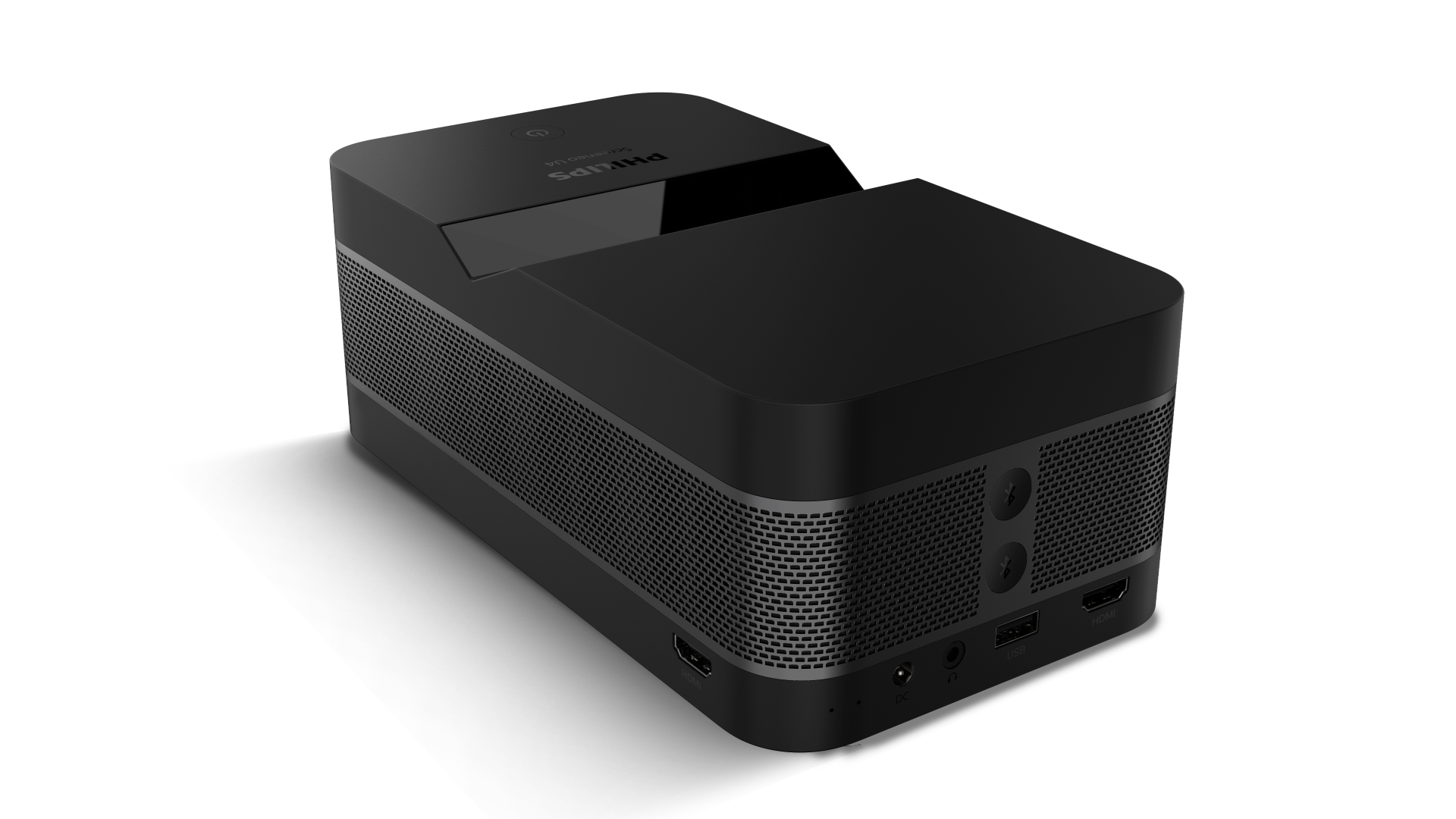Philips’ new projector looks like one I’d actually want in my living room
A big image from a vanishingly small box

Ultra short throw (UST) projectors are the way to go if you want a big image without taking up much room space, and you prefer not to buy a huge OLED or LCD TV. Philips has ventured into the UST arena before with its Screeneo U3 model, but the company’s new Screeneo U4 appears to strike a much better balance between budget and big picture concerns.
Available exclusively for pre-order on Indiegogo at the affordable introductory price of €599 / $620, the Screeneo U4, which ships in August, is priced competitively with some of the best portable projectors we’ve reviewed recently such as Samsung's The Freestyle and the Xgimi Halo. Similar to those, it’s a DLP model with a very living room-friendly design, sporting a dark matte aluminum and ABS case with curved edges. This sets it apart from other UST projectors, most of which tend to be overly large and appliance-like.
Given the low price, you wouldn’t expect the Screeneo U4 to beam 4K images, though this 1080p-resolution model does accept a 4K/60Hz video input and can handle HDR10 sources. A 0.25:1 throw ratio means you can position it 7.7 inches from a wall or projection screen to get a 60-inch image, and 12 inches away for an 80-inch image. At just 4.8 x 3.2 x 8.8 inches and 3 pounds, the Screeneo U4 is designed to be portable, while its auto-focus and auto-keystone features instantly dial in a perfectly sharp and correctly positioned picture after setting it down for viewing.
The Screeneo U4’s spec sheet cites brightness for its LED-driven light engine at 400 lumens. Following in the footsteps of Epson in providing detailed specs, Philips’ numbers are for both color and white brightness – something that should have a real-world viewing impact. Other specs cite Rec.709 (HDTV) color space coverage at 108% and light source life at 30,000 hours. Input latency is 30ms, which is impressive for a model not specifically designed as a gaming projector.

A pair of HDMI inputs on the Screeneo U4 allow for connection of a gaming console and a Roku, Fire TV or other streaming stick, while a USB type-A port can provide power to the latter options. A 2.1 onboard sound system boasting 2 x 15 watts can serve as an audio system, or you can use the Screeneo U4’s dual Bluetooth outputs for an instant audio upgrade by linking to an external Bluetooth speaker or soundbar or wireless headphones (a pair of them, if you want).
Analysis: when it comes to projectors, smaller can be better
The best 4K projectors in the ultra short throw (UST) category offer an easy way to get an enormous 100-inch or larger image in your living space. And they do so without the inconvenience of having to install a box that beams an image from far away and requires careful control of room lighting to get good picture quality.
Get daily insight, inspiration and deals in your inbox
Sign up for breaking news, reviews, opinion, top tech deals, and more.
While the benefits of UST projectors, which require installation only a few inches from the wall to work their big-screen magic, are undeniable, they are usually unattractive devices bearing more than a passing resemblance to a space heater or other large appliance.
A few companies like Xgimi with 4K Aura model bring design expertise to the UST projector game, but the Aura is priced at $2,800 – an amount well out of the range of many household budgets. It’s also what you can expect to pay for some 85-inch TVs, and those offer a nearly equivalent big-screen experience but with significantly higher brightness on tap to benefit HDR viewing.
At just €599 / $620 for an 80-inch picture, Philips’ compact Screeneo U4 seems like just the ticket for casual gaming or sports viewing, or for a family movie night. More to the point, the projector itself is unobtrusive and actually looks good.

Al Griffin has been writing about and reviewing A/V tech since the days LaserDiscs roamed the earth, and was previously the editor of Sound & Vision magazine.
When not reviewing the latest and greatest gear or watching movies at home, he can usually be found out and about on a bike.